The Spice Islands: a tale of empires, enterprise and envy
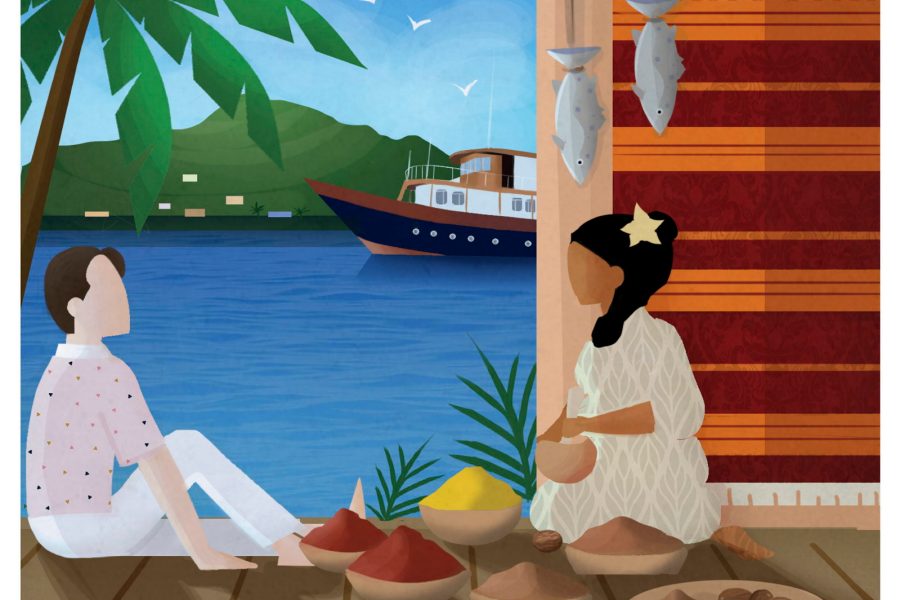
It wasn’t oil that wars were fought over in the 17th century – it was spices. For the British and Dutch, one rare and exotic spice in particular: nutmeg. From medieval times to the 17th century, it was the ultimate luxury. A food preservative, flavour enhancer and medicinal cure-all, the small, fragrant nut commanded more that its weight in gold – seven plump oxen per pound was the going rate according to German records from the 1300s.
There was just one problem: European traders weren’t exactly sure of its source. In the 11th century, Arab and Chinese traders introduced nutmeg to the Roman port city of Constantinople (known today as Istanbul) from where it reached Western shores. But few Europeans had ever ventured to the region they would eventually call the East Indies.
The quest to find the source sparked a frenzied century of shipbuilding, exploration and war. Voyages to these uncharted lands claimed thousands of souls: navigational errors saw wayward explorers freeze to death in the polar ice caps; others were sunk by violent typhoons, blasted by the canons of rival European vessels or decimated by dysentery. (Some failures led to inadvertent successes: Christopher Columbus ‘discovered’ the Americas, and the seeds of future trade networks were sown across India, Africa and the Middle East.)
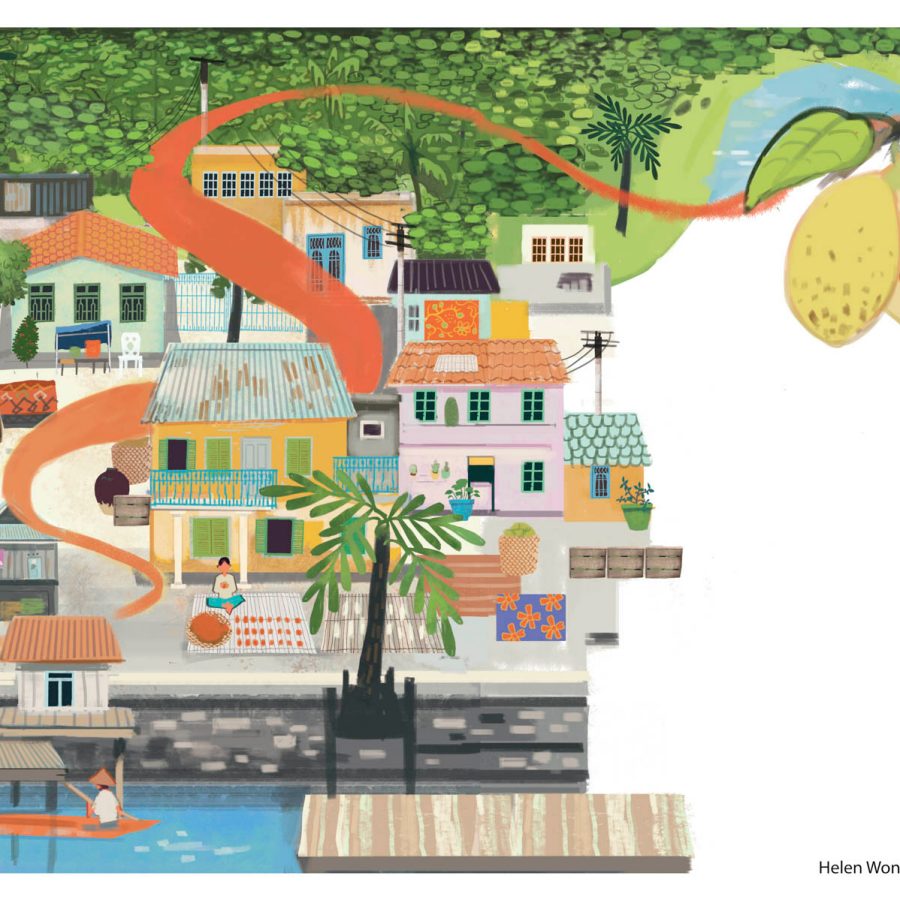
Illustration: SCAD students
Eventually, the beleaguered European carracks found their way to the ports of Bantam, Sumatra and Batavia (as Jakarta was known then), where they learned the secret location of nutmeg’s origins: the Banda Islands, a tiny cluster of volcanic islands at the southern tip of Indonesia’s Moluccas archipelago.
The journey today is still no mean feat: a 24-hour trek from Hong Kong (with flight transfers in Jakarta and Makassar to get to Ambon) followed by 18 hours across the Banda Sea by boat. But the conditions are slightly more appealing than 16th century accommodation – particularly onboard Rascal , a luxury liveaboard traditional Indonesian phinisi. Her sleek white curves and wooden decking are a world away from the ship-worm riddled vessels that carried early European explorers. My cabin (one of five) is a spacious mariner’s den, complete with a kingsize bed, a desk overlooking a porthole for scribblings in my journal and a thoughtfully stocked bookshelf.
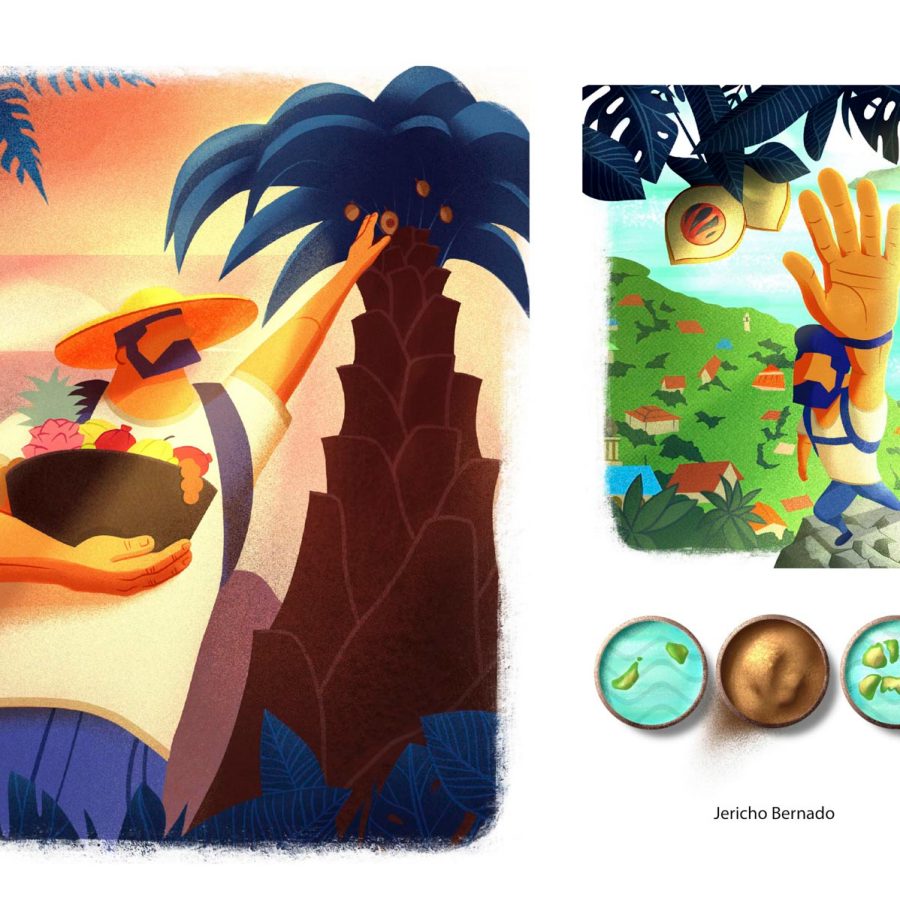
Illustration: SCAD students
Instead of scrubbing decks or climbing rigging, I spend my time lounging on the upper deck daybeds – the perfect place to hide from the blazing equatorial sun while delving into my copy of Nathaniel’s Nutmeg, Giles Milton’s retelling of the islands’ spicy history and role in global trade – and war. Or I might pop into the wheelhouse to visit Captain Sarbi – or Yoda to everyone – and examine detailed ocean charts. The sea below reaches a staggering 800 metres, the deepest in all Indonesia.
You’re supposed to be able to smell the islands before you see them, according to the diaries of 16th century traders. We sniff the air hopefully as we approach shortly after sunrise; but it seems the islands’ scent has faded with their fame. What we can’t fail to notice is the looming presence of Gunung Api, a volcano bearing great black scars from its most recent eruption in 1989. Early Dutch arrivals recorded how they were treated to ‘nothing but cinders, fire and smoke’ as the volcano entered an especially active phase at the turn of the 17th century.
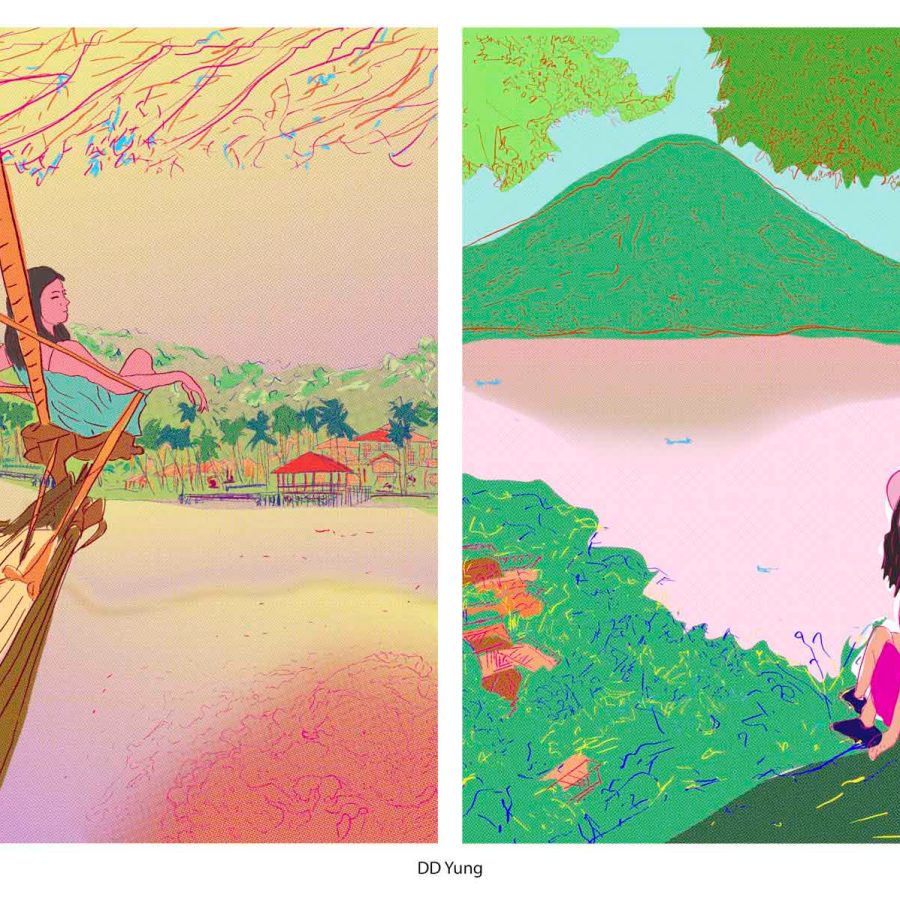
Illustration: SCAD students
Like the early merchants, we sail into the jungle-ringed harbour of the main island, Banda Neira. We’re quite a novelty to the small community (20,000 scattered across 10 islands): bemused school children being tug-boated home wave to the foreigners now kayaking around the shoreline.
The Portuguese were the first Europeans to make it here in 1511, though they were swiftly driven out by the local Bandanese. Almost a century later, English and Dutch forces arrived. Their lasting presence is everywhere: colourful colonial structures hug the shoreline of Banda Neira, while mighty forts tell of the protracted struggles to gain control of the nutmeg. Our guide Hamde is testament to the centuries of international influence: his Arabic name a legacy from the original traders, and his thick Dutch accent a clue as to the eventual victors in the spice wars.
The first stop of our cycle-taxi tour is the former governor’s residence: a sprawling colonial mansion that now lies empty and neglected; next, a museum laden with nutmeg utensils, weapons and paintings depicting bloody Anglo-Dutch battles. Locals regularly find more artefacts in the ground; one shows us his collection of coins from the 1600s.
At Fort Nassau we tour prison cells and scale rickety ladders to take in the view from the turrets. In the evening, the Rascal crew have arranged a lavish barbecue on the ramparts, gazing over sea and setting sun. Conversation returns to the islands’ history. By the mid-17th century, the Dutch had locked down the trade, but there were two islands, Run and Ai – two of the islands most blessed with the spice – that the British clung onto.

Illustration: SCAD students
Run was the last bastion of the English, and a scene of heroic resilience by East India Company men like Nathaniel Courthorpe. But by 1667, it was clear their cause was lost. Back at the negotiating tables in London and Amsterdam, the Treaty of Breda was signed: the British ceded control of Run to the Dutch in return for a small Dutch colony in the Americas called New Amsterdam. The British renamed it New York.
But we’re not going to Run. I’m pouting a bit, after all the historical build up. But cruise director Gary Philips insists Ai is the real treat: smaller and even more idyllic.
This time we can smell it: a sweet, pungent fragrance. We anchor offshore and pull into a white crescent beach framed by colourful houses. A welcome party is gathered at a bright yellow house that belongs to Ayem, who takes us through manicured streets to the nutmeg plantation, explaining the various stages of production. First, the fruit is plucked from trees with a 3.5-metre hooked pole, then cracked open, revealing not one but two ingredients: mace, a webbed red covering, and the nutmeg seed that’s dried and ground into spice.
On our walk Ayem plucks a white jambu (Javanese apple) for us to taste – subtle with a hint of sweetness. Next we try its redder, sourer cousin. Suddenly we’re on an impromptu food tour: the neutral but meaty texture of starfruit; the sharp tang of tamarind; the creaminess of fresh almonds from century-old trees; and the pop of fresh pomegranate. Even the inedible finds are intriguing: cotton-like kapok fibres and Instagrammable neon-pink pineapples.
Back at Ayem’s house – spartan, humble, but with a balcony view worth a million bucks – we’re offered nutmeg-laced tea and biscuits, along with cinnamon rolls. Then it’s dinner, which involves a guy wading out, snorkel in tow, to retrieve three fat lobsters from the traps – a bargain at US$50 (HK$400). It’s quite the village event. Everyone gathers round to examine the loot while a female protecting a bellyful of eggs is released back into the water. When Ayem reveals he rents his home on Tripadvisor (Green Coconut Guest House – 4.5-star rating) it seems jarringly 21st century.
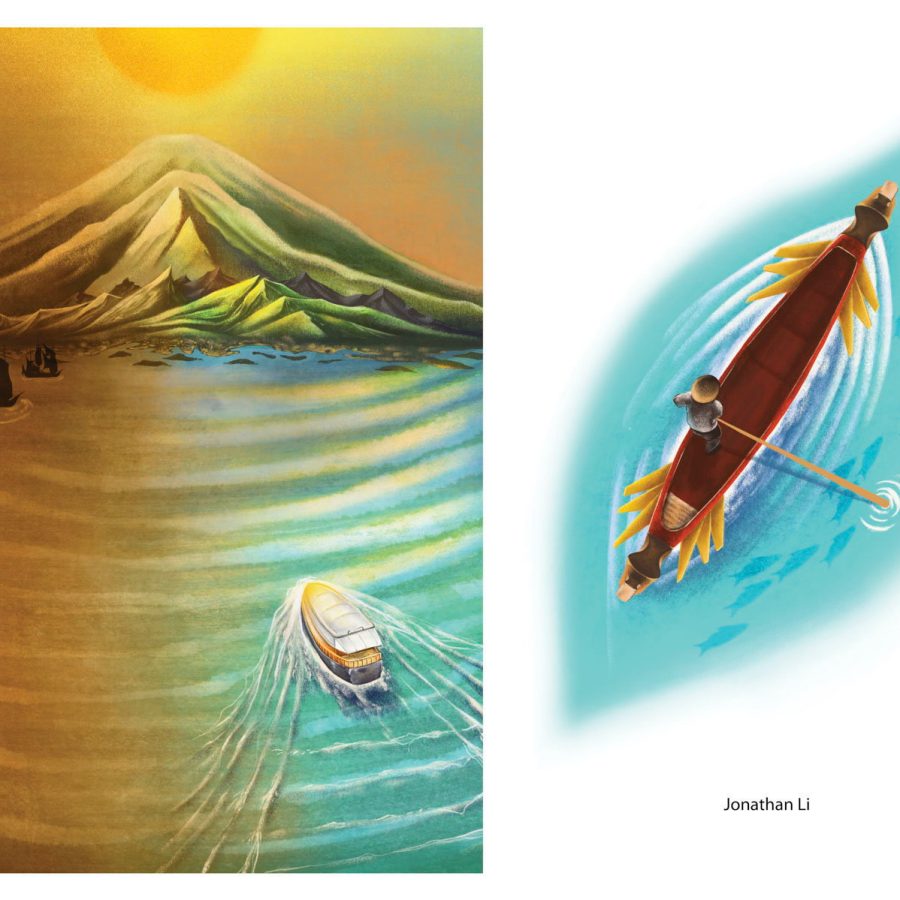
Illustration: SCAD students
Their natural defences made Run and Ai difficult to conquer: a ring of coral reef. Today, that coral is a scuba diver’s dream. Schools of brilliantly coloured fish swirl around columns of coral at the Bati Kapal dive site, carpeted with vivid anemones. Moray eels peek out of their burrows, sea turtles glide past, a reef shark darts out of view. At the foot of Gunung Api, a charredunderwater landscape, new reefs are shooting to life.
These underwater kingdoms are home to 397 species of coral and 683 species of fish. Unesco has dubbed it the ‘Amazon of the Sea’ and placed the Banda Islands on the tentative inclusion list as a World Heritage site. Another reason for its inclusion are the area’s unique cultural traits – like the long, narrow kora kora boats.
On our final morning, we see them for ourselves as we’re honoured with a traditional farewell – derived from a more warlike practice of chasing early invaders out. Around 50 men climb into a red and yellow kora kora (each village has its own colours) to escort us out of the harbour. It’s serene and ceremonious to start – until a war cry calls out, then the race is on. Even when we power to 10 knots they’re keeping pace, shrill battle cries carrying over the breeze. As the harbour gives way to the open ocean, they retreat and bid us goodbye. We have another 18 hours ahead on the return journey, but this time I wish it were longer.
The inaccessibility of the Banda Islands is a blessing in disguise. Getting there feels like a real adventure and it’s virtually untouched by mass tourism, which can’t be said for Indonesian hotspots like the Komodo and Raja Ampat islands. (The government has announced that Komodo National Park – the natural habitat of the endangered komodo dragon – will close for a year in 2020 for exactly this reason.) But on the Banda Islands, such 21st century problems cease to exist. In fact, the 21st century (Tripadvisor notwithstanding) seems to slip away altogether, leaving you to savour the timeless pleasures of peace, quiet – and spice-rich local delights.
Smooth sailing
Rascal Voyages offers charter experiences around the thousands of islands in the Indonesian archipelago, from first-hand encounters with Komodo dragons to explorations of the stunning national parks of the Flores Sea and Raja Ampat.
The 30-metre ironwood and teak phinisi is more like a floating boutique hotel than a typical liveaboard, with five luxurious cabins, full catering facilities and a service ratio of at least one staff member per guest, including Padi-certified scuba diving instructors.
Rascal Voyages has also partnered with Conservation International to arrange off-grid expeditions that seek to facilitate scientific breakthroughs and further the understanding of marine biodiversity – recent itineraries have included a survey of the far-flung Mapia Atoll to study marine life including sea turtles and manta rays.
To illustrate this feature, we partnered with the Savannah College of Art and Design Hong Kong. Students were asked to use their talents to bring the story to life as part of their coursework, and the following designers’ illustrations were chosen: Kaylee Chan, Gabriella Teresa, Jonathan Li, Helen Wong, DD Yung, Julia Marinelli, Jo Hannah Amancio, Dilara Polat, Jakob Potter, Jericho Bernado, Reana Bachilla, Olivia Shin and Minkyung Kim.
Jakarta travel information
- China – the Chinese Mainland, Hong Kong SAR, Macao SAR and Taiwan Region
- Hong Kong SAR - English
- Chinese Mainland (China) - English
- Taiwan, China - English
- 香港特別行政區 - 繁體中文
- 中国內地 - 简体中文
- 中國台灣 - 繁體中文
- Africa
- South Africa - English
- Asia
- Bangladesh - English
- Korea - English
- Singapore - English
- Cambodia - English
- 한국 - 한국어
- Sri Lanka - English
- India - English
- Malaysia - English
- Thailand - English
- Indonesia - English
- Maldives - English
- ประเทศไทย - ภาษาไทย
- Indonesia - Bahasa Indonesia
- Myanmar - English
- Vietnam - English
- Japan - English
- Nepal - English
- Việt Nam - tiếng Việt
- 日本 - 日本語
- Philippines - English
- Australasia
- Australia - English
- New Zealand - English